Photovoltaic Power Forecast Using Deep Learning Techniques with Hyperparameters Based on Bayesian Optimization: A Case Study in the Galapagos Islands
Abstract
1. Introduction
2. Renewable Energies in Ecuador
3. Deep Learning Techniques Applied to Forecast Photovoltaic Power
3.1. Long-Short-Term Memory Projected
3.2. Bidirectional Long-Short-Term Memory
3.3. Convolutional Neural Network
3.4. Hybrid
3.5. Hyperparameters Optimization
- A random sampling of hyperparameter values.
- Observe the performance of the model.
- Based on the previous observation, it fits a Gaussian process.
- Calculate the mean of this Gaussian process as an approximation of the loss function.
- An acquisition function (hyperparameter) obtains the following hyperparameter space exploration algorithm.
- Fit the model, observe the output (model performance), and iterate over the same process until reaching the maximum number of iterations.
4. Methodology
4.1. Data Collection
4.2. Photovoltaic Model
4.3. Data Normalization
4.4. Training
4.5. Performance Indicators
5. Simulation Results
6. Conclusions
Author Contributions
Funding
Institutional Review Board Statement
Informed Consent Statement
Data Availability Statement
Conflicts of Interest
References
- Luo, X.; Zhang, D. An adaptive deep learning framework for day-ahead forecasting of photovoltaic power generation. Sustain. Energy Technol. Assess. 2022, 52, 102326. [Google Scholar] [CrossRef]
- Etxegarai, G.; López, A.; Aginako, N.; Rodríguez, F. An analysis of different deep learning neural networks for intra-hour solar irradiation forecasting to compute solar photovoltaic generators’ energy production. Energy Sustain. Dev. 2022, 68, 1–17. [Google Scholar] [CrossRef]
- Rodríguez, F.; Azcárate, I.; Vadillo, J.; Galarza, A. Forecasting intra-hour solar photovoltaic energy by assembling wavelet based time-frequency analysis with deep learning neural networks. Int. J. Electr. Power Energy Syst. 2022, 137, 107777. [Google Scholar] [CrossRef]
- Guanoluisa-Pineda, R.; Ibarra, A.; Arcos-Aviles, D.; Martinez, W.; Motoasca, E.; Guinjoan, F. Short-Term forecasting of photovoltaic power in an isolated area of Ecuador using deep learning techniques. In Proceedings of the 11th International Conference on Renewable Energy Research and Application, Istanbul, Turkey, 18–21 September 2022; pp. 408–413. [Google Scholar] [CrossRef]
- Aribia, H.B.; El-Rifaie, A.M.; Tolba, M.A.; Shaheen, A.; Moustafa, G.; Elsayed, F.; Elshahed, M. Growth Optimizer for Parameter Identification of Solar Photovoltaic Cells and Modules. Sustainability 2023, 15, 7896. [Google Scholar] [CrossRef]
- Elshahed, M.; El-Rifaie, A.M.; Tolba, M.A.; Ginidi, A.; Shaheen, A.; Mohamed, S.A. An Innovative Hunter-Prey-Based Optimization for Electrically Based Single-, Double-, and Triple-Diode Models of Solar Photovoltaic Systems. Mathematics 2022, 10, 4625. [Google Scholar] [CrossRef]
- Shaheen, A.; El-Sehiemy, R.; El-Fergany, A.; Ginidi, A. Representations of solar photovoltaic triple-diode models using artificial hummingbird optimizer. Energy Sources Part A Recover Util. Environ. Eff. 2022, 44, 8787–8810. [Google Scholar] [CrossRef]
- El-Sehiemy, R.; Shaheen, A.; El-Fergany, A.; Ginidi, A. Electrical parameters extraction of PV modules using artificial hummingbird optimizer. Sci. Rep. 2023, 13, 9240. [Google Scholar] [CrossRef]
- Ginidi, A.R.; Shaheen, A.M.; El-Sehiemy, R.A.; Hasanien, H.M.; Al-Durra, A. Estimation of electrical parameters of photovoltaic panels using heap-based algorithm. IET Renew. Power Gener. 2022, 16, 2292–2312. [Google Scholar] [CrossRef]
- Eidiani, M.; Zeynal, H.; Ghavami, A.; Zakaria, Z. Comparative Analysis of Mono-Facial and Bifacial Photovoltaic Modules for Practical Grid-Connected Solar Power Plant Using PVsyst. In Proceedings of the IEEE International Conference on Power Energy, Langkawi, Kedah, Malaysia, 5–6 December 2022; pp. 499–504. [Google Scholar] [CrossRef]
- Pascual, J.; Barricarte, J.; Sanchis, P.; Marroyo, L. Energy management strategy for a renewable-based residential microgrid with generation and demand forecasting. Appl. Energy 2015, 158, 12–25. [Google Scholar] [CrossRef]
- Kanchana, W.; Sirisukprasert, S. PV Power Forecasting with Holt-Winters Method. In Proceedings of the 8th International Electrical Engineering Congress (iEECON) 2020, Chiang Mai, Thailand, 4–6 March 2020; pp. 1–4. [Google Scholar] [CrossRef]
- Hossain, M.S.; Mahmood, H. Short-Term Photovoltaic Power Forecasting Using an LSTM Neural Network and Synthetic Weather Forecast. IEEE Access 2020, 8, 172524–172533. [Google Scholar] [CrossRef]
- Dairi, A.; Harrou, F.; Sun, Y.; Khadraoui, S. Short-Term Forecasting of Photovoltaic Solar Power Production Using Variational Auto-Encoder Driven Deep Learning Approach. Appl. Sci. 2020, 10, 8400. [Google Scholar] [CrossRef]
- Cheng, L.; Zang, H.; Wei, Z.; Ding, T.; Sun, G. Solar Power Prediction Based on Satellite Measurements—A Graphical Learning Method for Tracking Cloud Motion. IEEE Trans. Power Syst. 2022, 37, 2335–2345. [Google Scholar] [CrossRef]
- Rodríguez, F.; Galarza, A.; Vasquez, J.C.; Guerrero, J.M. Using deep learning and meteorological parameters to forecast the photovoltaic generators intra-hour output power interval for smart grid control. Energy 2022, 239, 122116. [Google Scholar] [CrossRef]
- Suresh, V.; Janik, P.; Rezmer, J.; Leonowicz, Z. Forecasting Solar PV Output Using Convolutional Neural Networks with a Sliding Window Algorithm. Energies 2020, 13, 723. [Google Scholar] [CrossRef]
- Agga, A.; Abbou, A.; Labbadi, M.; El Houm, Y. Short-term self consumption PV plant power production forecasts based on hybrid CNN-LSTM, ConvLSTM models. Renew. Energy 2021, 177, 101–112. [Google Scholar] [CrossRef]
- Zhou, S.; Zhou, L.; Mao, M.; Xi, X. Transfer Learning for Photovoltaic Power Forecasting with Long Short-Term Memory Neural Network. In Proceedings of the International Conference on Big Data and Smart Computing, Busan, Republic of Korea, 12–22 February 2020; pp. 125–132. [Google Scholar] [CrossRef]
- Klein, A.; Falkner, S.; Bartels, S.; Hennig, P.; Hutter, F. Fast Bayesian hyperparameter optimization on large datasets. Electron. J. Stat. 2017, 11, 4945–4968. [Google Scholar] [CrossRef]
- Ciaramella, A.; Staiano, A.; Cervone, G.; Alessandrini, S. A Bayesian-Based Neural Network Model for Solar Photovoltaic Power Forecasting. In Advances in Neural Networks: Computational Intelligence for ICT; Bassis, S., Esposito, A., Morabito, F., Pasero, E., Eds.; Springer: Cham, Switzerland, 2016; pp. 169–177. [Google Scholar] [CrossRef]
- Guo, X.; Mo, Y.; Yan, K. Short-Term Photovoltaic Power Forecasting Based on Historical Information and Deep Learning Methods. Sensors 2022, 22, 9630. [Google Scholar] [CrossRef]
- Li, Y.; Li, Z.; Yang, L.; Wang, B. Photovoltaic Power Prediction Based on Improved Sparse Bayesian Regression. Electr. Power Compon. Syst. 2016, 44, 1958–1968. [Google Scholar] [CrossRef]
- Jin, X.-B.; Zheng, W.-Z.; Kong, J.-L.; Wang, X.-Y.; Bai, Y.-T.; Su, T.-L.; Lin, S. Deep-Learning Forecasting Method for Electric Power Load via Attention-Based Encoder-Decoder with Bayesian Optimization. Energies 2021, 14, 1596. [Google Scholar] [CrossRef]
- Zhang, R.; Ma, H.; Hua, W.; Saha, T.K.; Zhou, X. Data-Driven Photovoltaic Generation Forecasting Based on a Bayesian Network With Spatial–Temporal Correlation Analysis. IEEE Trans. Ind. Inform. 2020, 16, 1635–1644. [Google Scholar] [CrossRef]
- Afshin, M.; Sadeghian, A.; Raahemifar, K. On Efficient Tuning of LS-SVM Hyper-Parameters in Short-Term Load Forecasting: A Comparative Study. In Proceedings of the IEEE Power Engineering Society General Meeting, Tampa, FL, USA, 24–28 June 2007; pp. 1–6. [Google Scholar] [CrossRef]
- Levman, J.; Jennings, M.; Kabaria, P.; Rouse, E.; Nangaku, M.; Berger, D.; Gondra, I.; Takahashi, E.; Tyrrell, P. Hold-out validation for the assessment of stability and reliability of multivariable regression demonstrated with magnetic resonance imaging of patients with schizophrenia. Int. J. Dev. Neurosci. 2021, 81, 655–662. [Google Scholar] [CrossRef] [PubMed]
- Enriquez, E. Diseño y Simulación de un Sistema de Previsión de Generación Fotovoltaica Basado en la Predicción Numérica del Clima. Bachelor’s Thesis, Universidad de las Fuerzas Armadas ESPE, Sangolquí, Ecuador, 2019. [Google Scholar]
- Fabara, C.; Maldonado, D.; Soria, M.; Tovar, A. Predicción de la Generación para un Sistema Fotovoltaico mediante la aplicación de técnicas de Minería de Datos. Rev. Técnica Energía 2019, 16, 64–72. [Google Scholar] [CrossRef]
- Romero, A.F.; Quilumba, F.L.; Arcos, H.N. Short-term active power forecasting of a photovoltaic power plant using an artificial neural network. In Proceedings of the Second Ecuador Technical Chapters Meeting, Salinas, Ecuador, 16–20 October 2017; pp. 1–5. [Google Scholar] [CrossRef]
- Vaca, D.; Ordoñez, F. Mapa Solar del Ecuador 2019. Quito. 2019. Available online: https://www.ingenieriaverde.org/wp-content/uploads/2020/01/Mapa_Solar_del_Ecuador_2019.pdf (accessed on 20 November 2022).
- Rodriguez, M.; Arcos–Aviles, D.; Martinez, W. Fuzzy logic-based energy management for isolated microgrid using meta-heuristic optimization algorithms. Appl. Energy 2023, 335, 120771. [Google Scholar] [CrossRef]
- ARCERNNR. ATLAS del Sector Eléctrico Ecuatoriano. Quito. 2021. Available online: Chrome-extension://efaidnbmnnnibpcajpcglclefindmkaj/https://www.controlrecursosyenergia.gob.ec/wp-content/uploads/downloads/2022/04/Atlas2021.pdf (accessed on 15 December 2022).
- Rodríguez, M.; Salazar, A.; Arcos-Aviles, D.; Llanos, J.; Martínez, W.; Motoasca, E. A Brief Approach of Microgrids Implementation in Ecuador: A Review. In XV Multidisciplinary International Conference on Intelligent Information Technology; Botto Tobar, M., Cruz, H., Díaz Cadena, A., Eds.; CIT 2020 Press: Quito, Ecuador; Springer: Cham, Switzerland, 2021; pp. 149–163. [Google Scholar] [CrossRef]
- Ayala-Pico, J.; Arcos–Aviles, D.; Ibarra, A.; Fernandez, C.; Guinjoan, F.; Martinez, W. Current development of electricity generation systems in the Galapagos Islands—Ecuador. Renew. Energy Focus 2023, 46, 88–102. [Google Scholar] [CrossRef]
- MEER. Plan Nacional de Eficiencia Energética 2016–2035; MEER: Quito, Ecuador, 2017. [Google Scholar]
- ElecGalapagos. Rendición de Cuentas; ElecGalapagos: San Cristobal, Galápagos, Ecuador, 2021. [Google Scholar]
- Jia, Y.; Wu, Z.; Xu, Y.; Ke, D.; Su, K. Long Short-Term Memory Projection Recurrent Neural Network Architectures for Piano’s Continuous Note Recognition. J. Robot. 2017, 2017, 1–7. [Google Scholar] [CrossRef]
- Sak, H.; Senior, A.; Beaufays, F. Long Short-Term Memory Based Recurrent Neural Network Architectures for Large Vocabulary Speech Recognition. arXiv 2014, arXiv:1402.1128v1. [Google Scholar] [CrossRef]
- Siami-Namini, S.; Tavakoli, N.; Namin, A.S. The Performance of LSTM and BiLSTM in Forecasting Time Series. In Proceedings of the International Conference on Big Data (Big Data), Los Angeles, CA, USA, 9–12 December 2019; pp. 3285–3292. [Google Scholar] [CrossRef]
- Koprinska, I.; Wu, D.; Wang, Z. Convolutional Neural Networks for Energy Time Series Forecasting. In Proceedings of the International Joint Conference on Neural Networks, Rio de Janeiro, Brazil, 8–13 July 2018; pp. 1–8. [Google Scholar] [CrossRef]
- Rajagukguk, R.A.; Ramadhan, R.A.A.; Lee, H.-J. A Review on Deep Learning Models for Forecasting Time Series Data of Solar Irradiance and Photovoltaic Power. Energies 2020, 13, 6623. [Google Scholar] [CrossRef]
- Cavazza, M. Towards Data Science. 2021. Available online: https://medium.com/towards-data-science/improve-your-model-performance-with-bayesian-optimization-hyperparameter-tuning-4dbd7fe25b62 (accessed on 20 November 2022).
- Kelin, A.; Falkner, S.; Bartels, S.; Henning, P.; Hutter, F. Fast Bayesian Optimization of Machine Learning Hyperparameters on Large Datasets. In Proceedings of the International Conference on Artificial Intelligence and Statistics, Fort Lauderdale, FL, USA, 20–22 April 2017; pp. 1–9. [Google Scholar]
- Kumar, A. Data Analytics 2022. Available online: https://vitalflux.com/hold-out-method-for-training-machine-learning-model/ (accessed on 15 November 2022).
- Commission, E. Photovoltaic Geographical Information System. 2019. Available online: https://re.jrc.ec.europa.eu/pvg_tools/en/#MR (accessed on 7 December 2022).
- Arcos-Aviles, D.; Pascual, J.; Guinjoan, F.; Marroyo, L.; Sanchis, P.; Marietta, M.P. Low complexity energy management strategy for grid profile smoothing of a residential grid-connected microgrid using generation and demand forecasting. Appl. Energy 2017, 205, 69–84. [Google Scholar] [CrossRef]
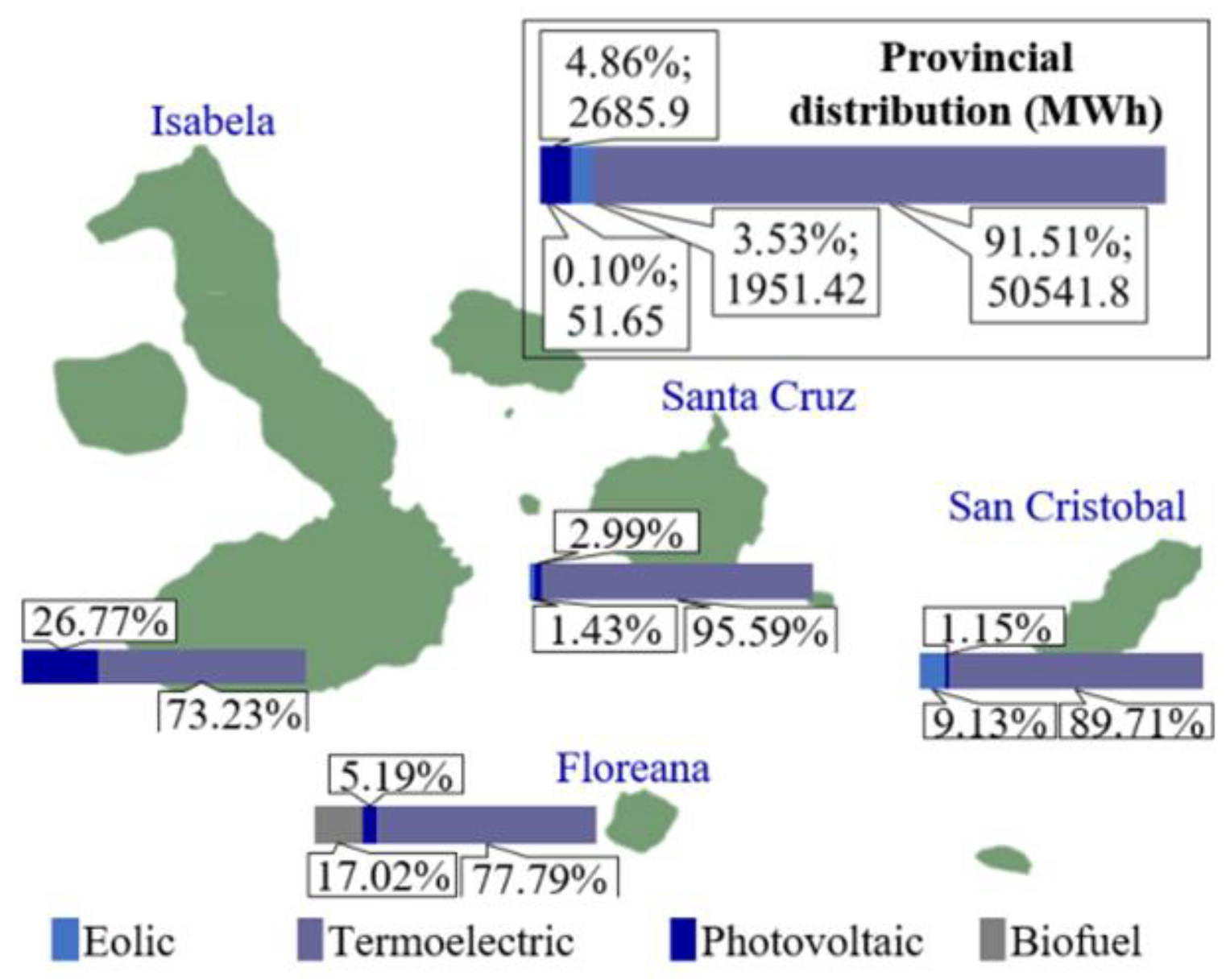
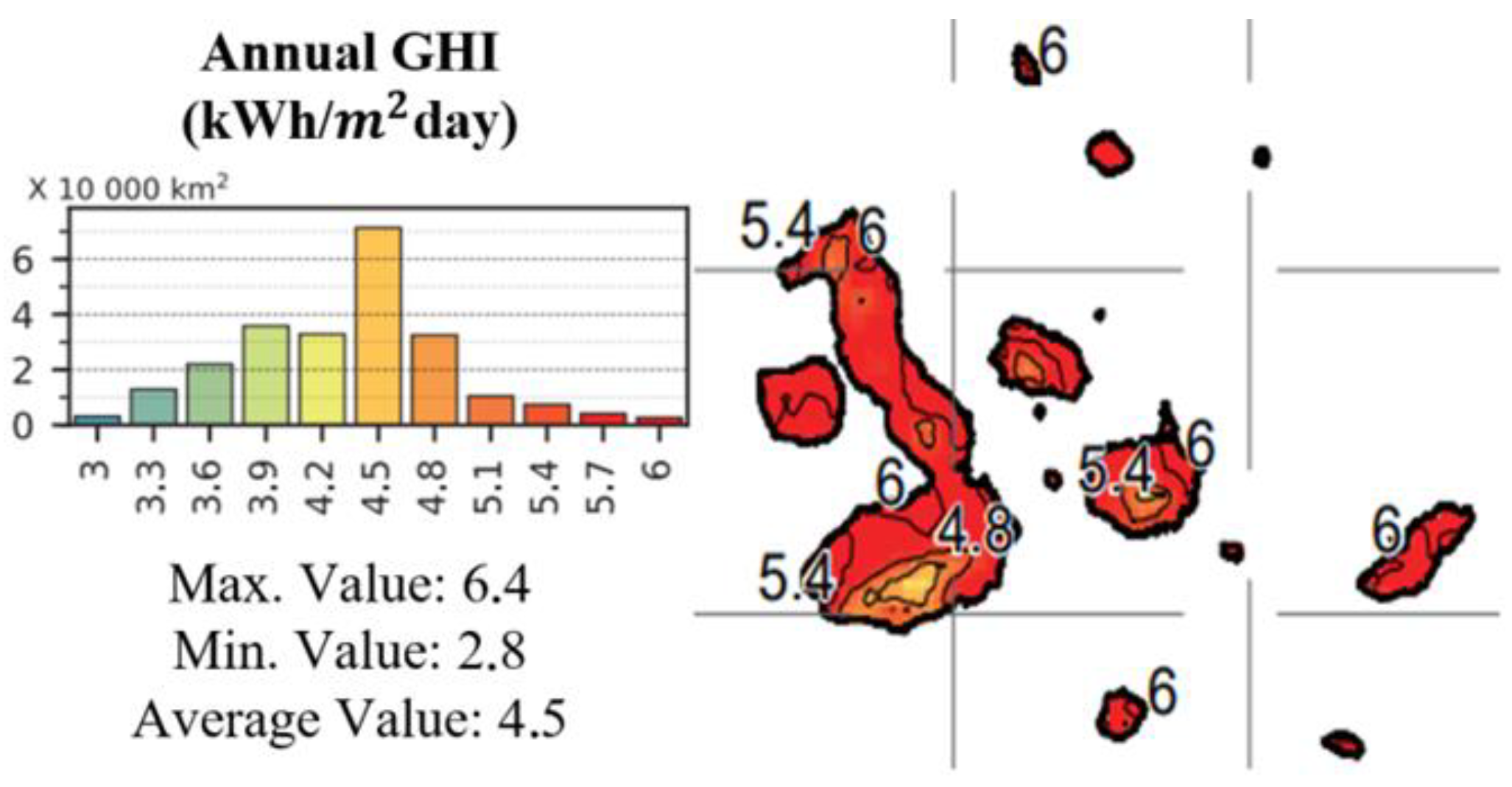

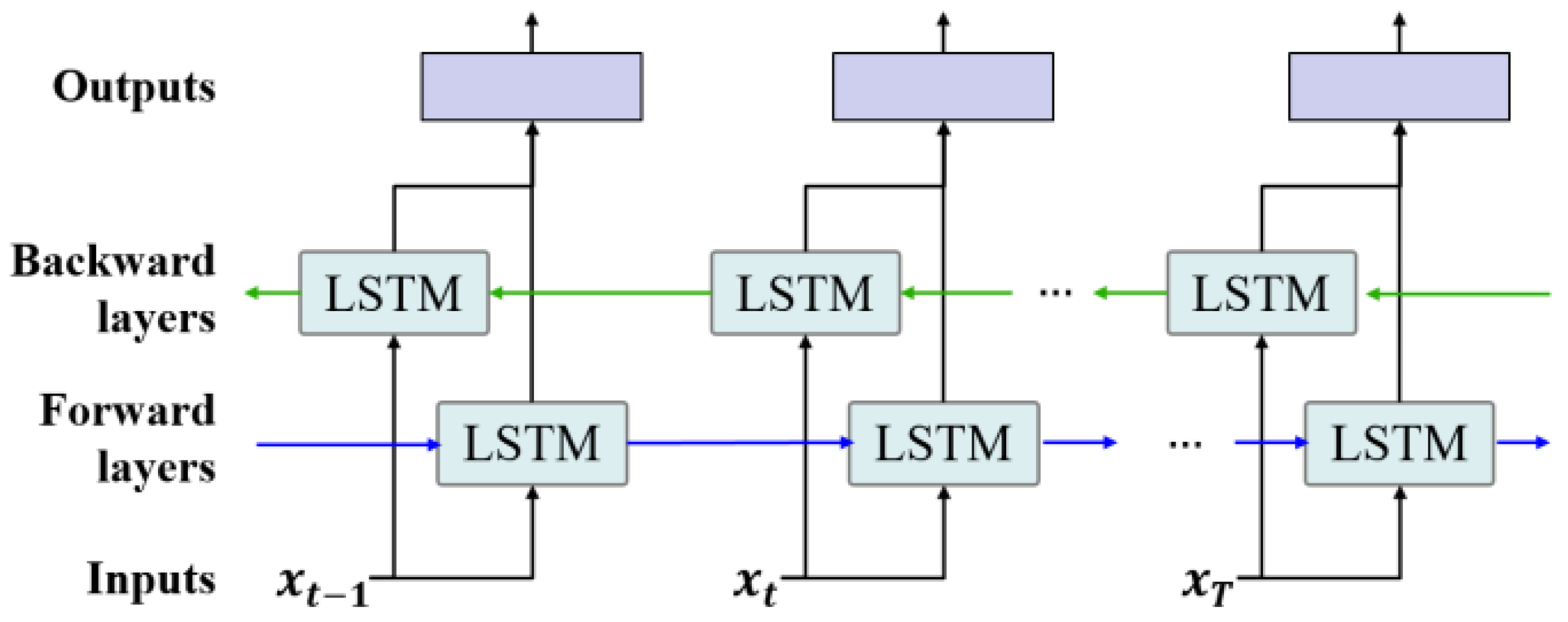
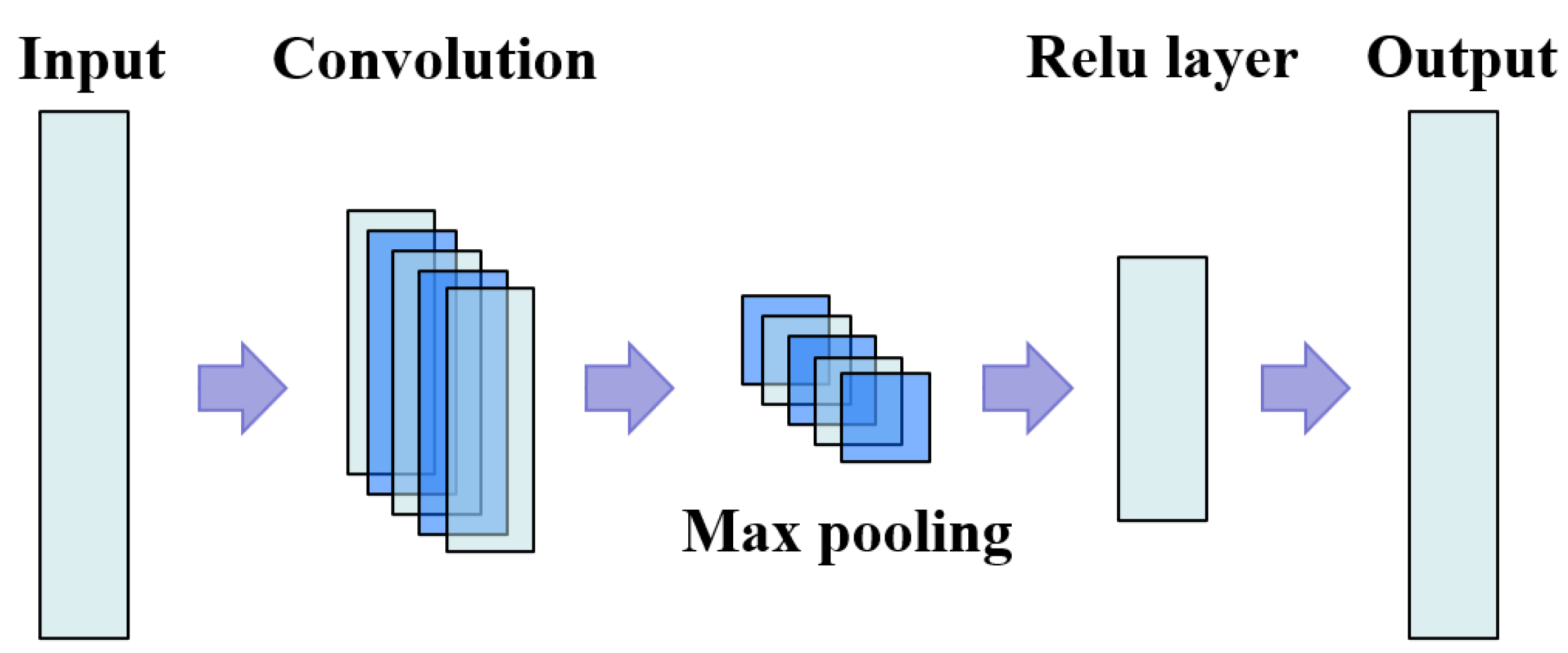

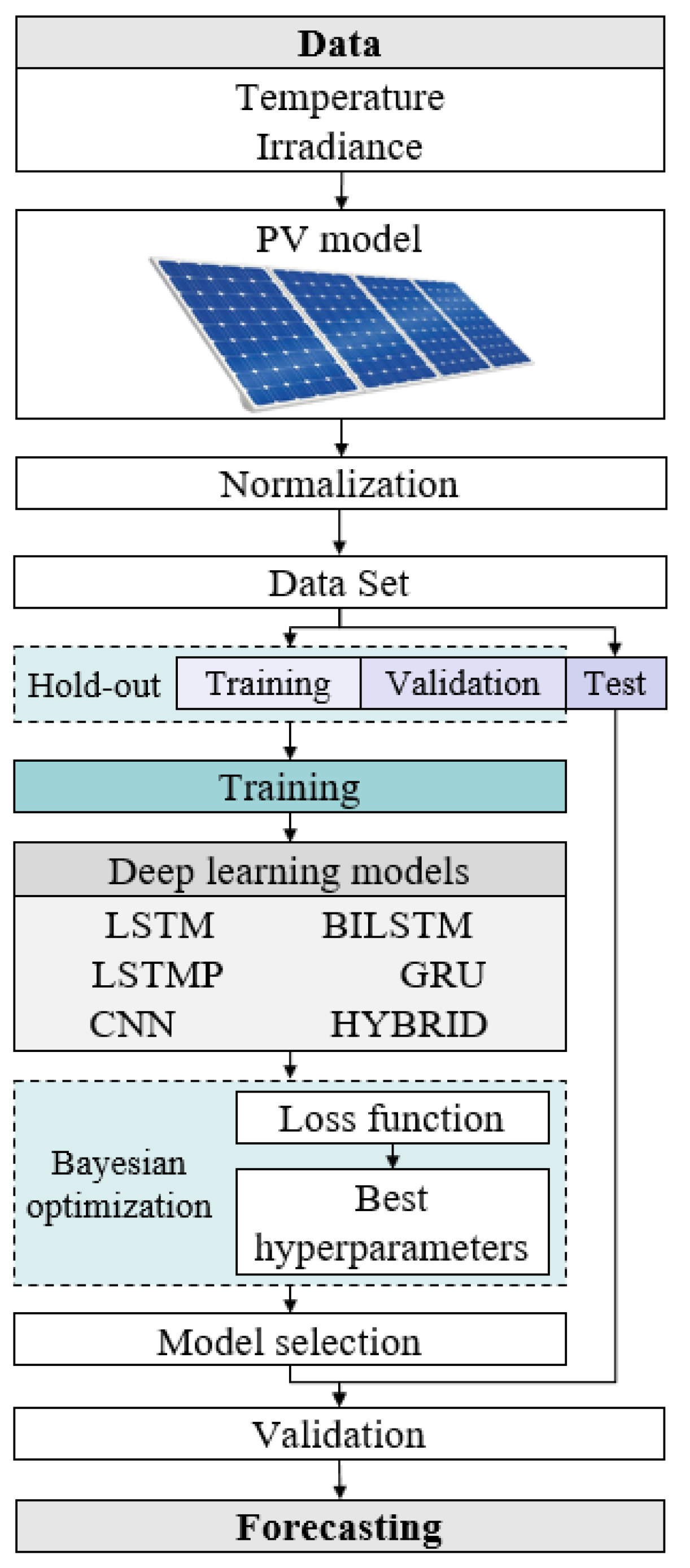
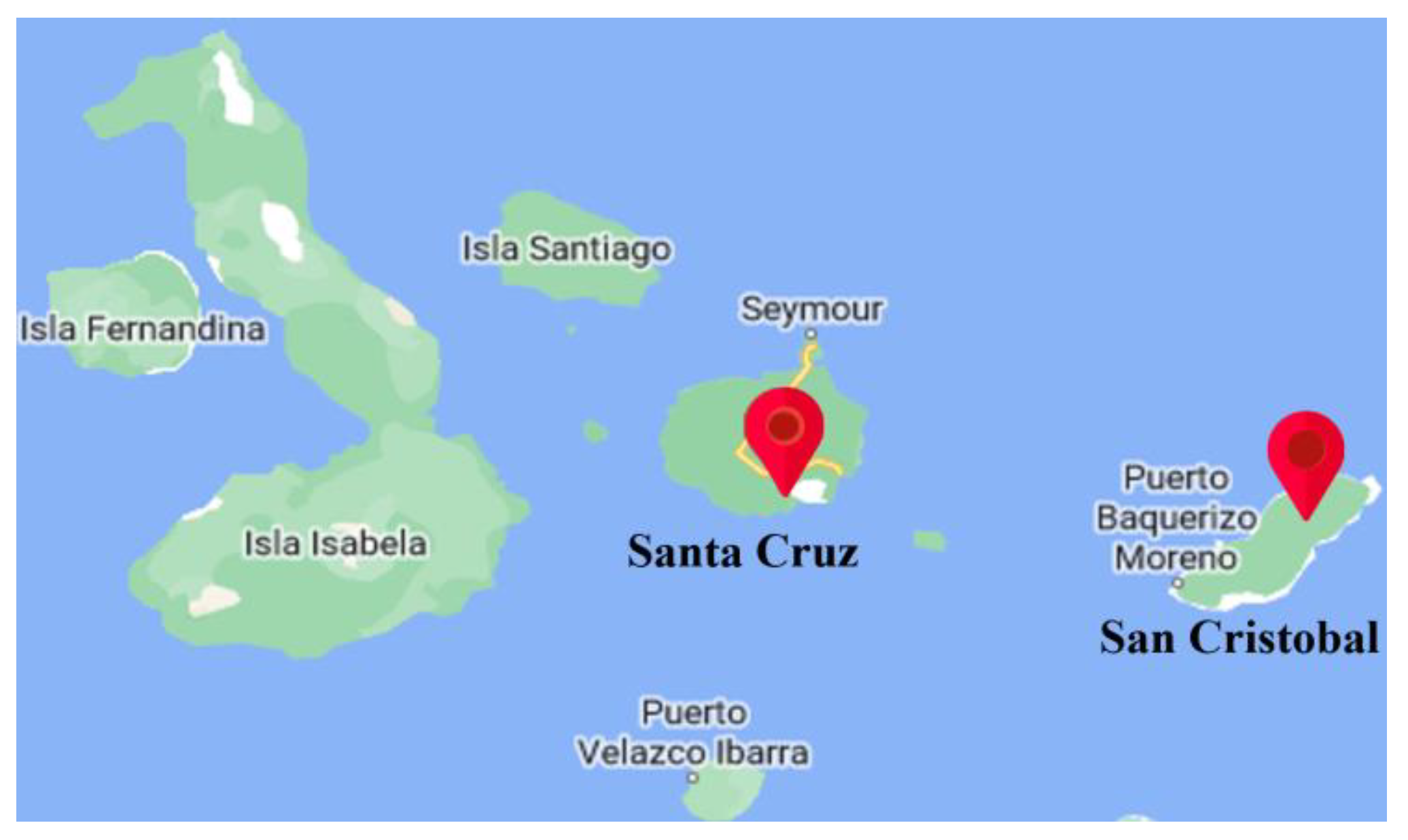
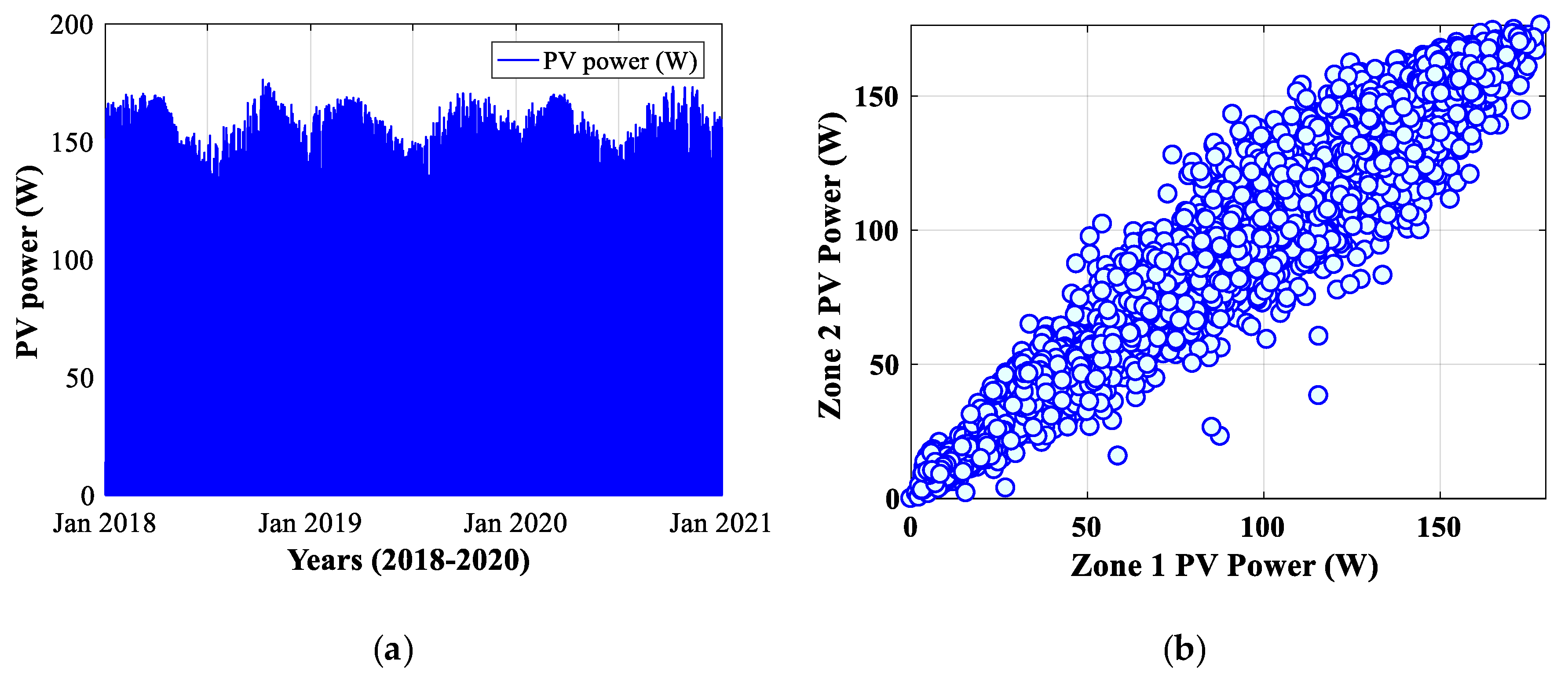
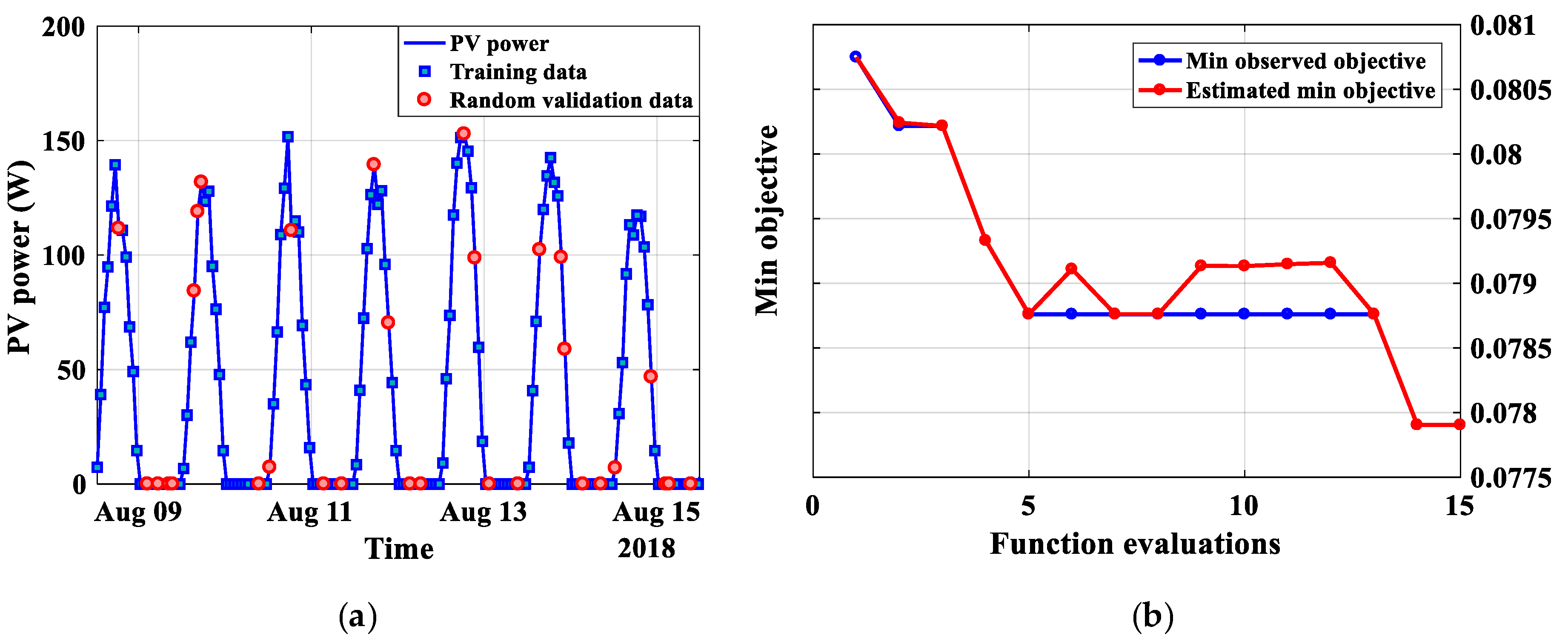
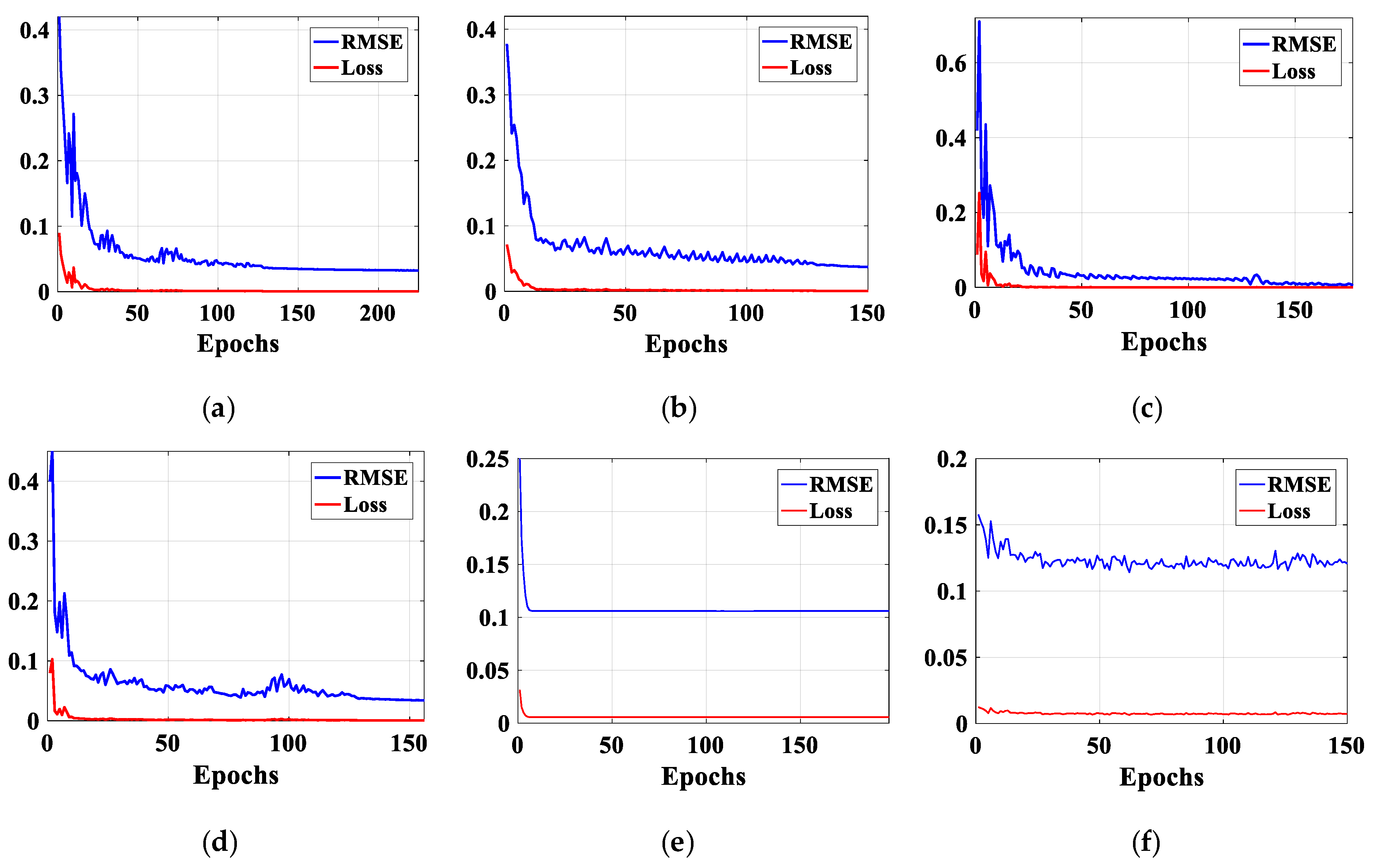
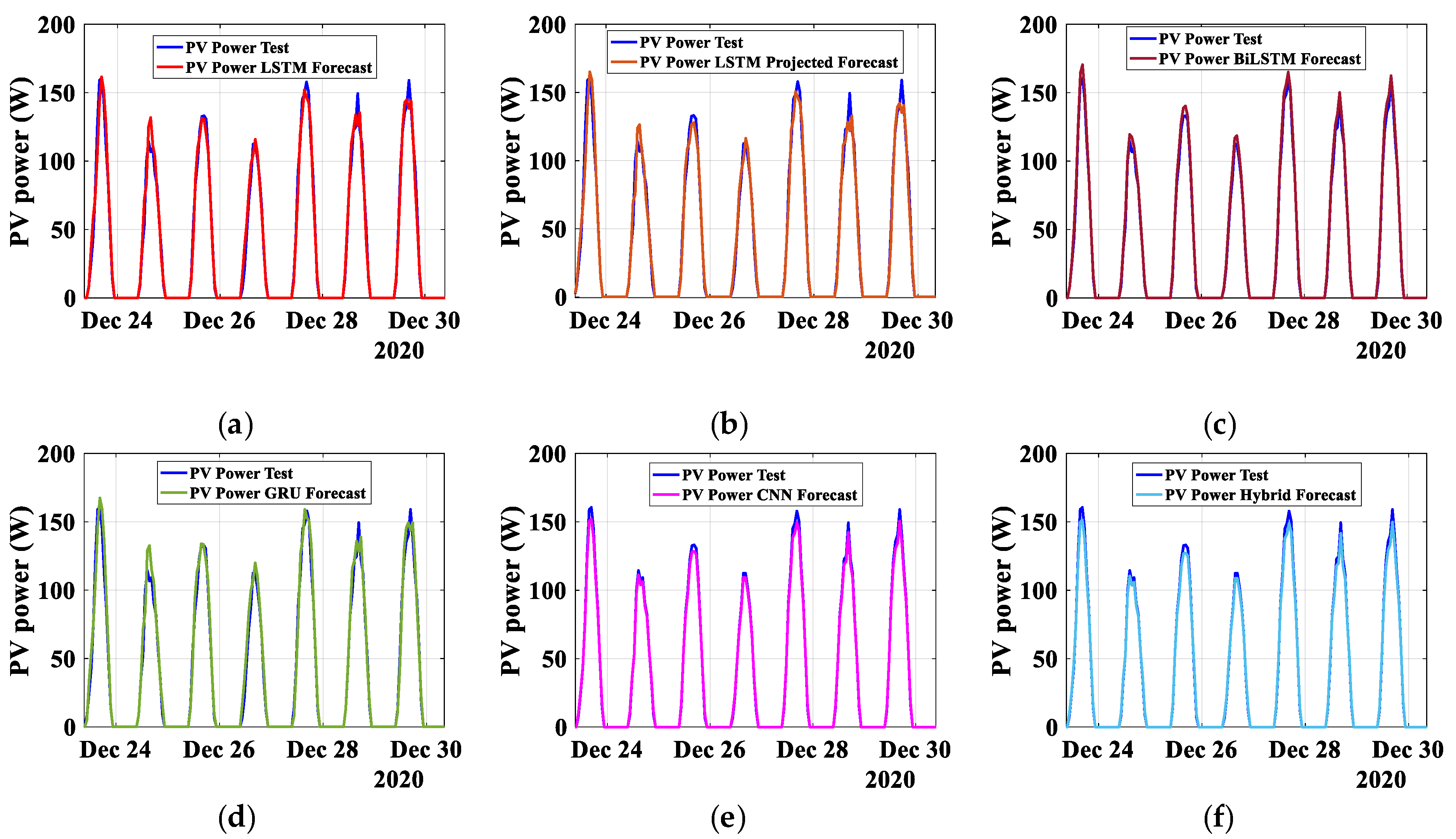

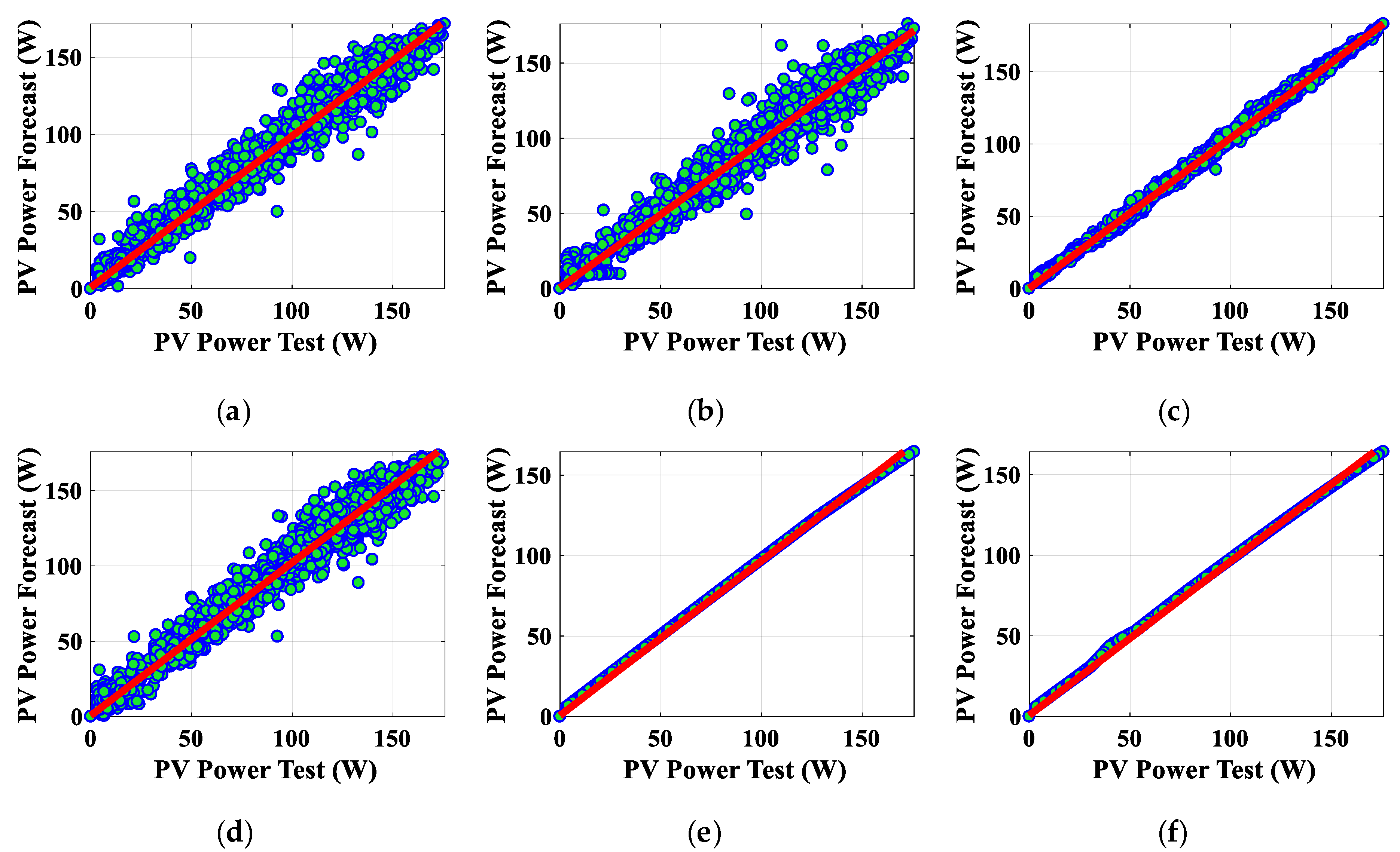
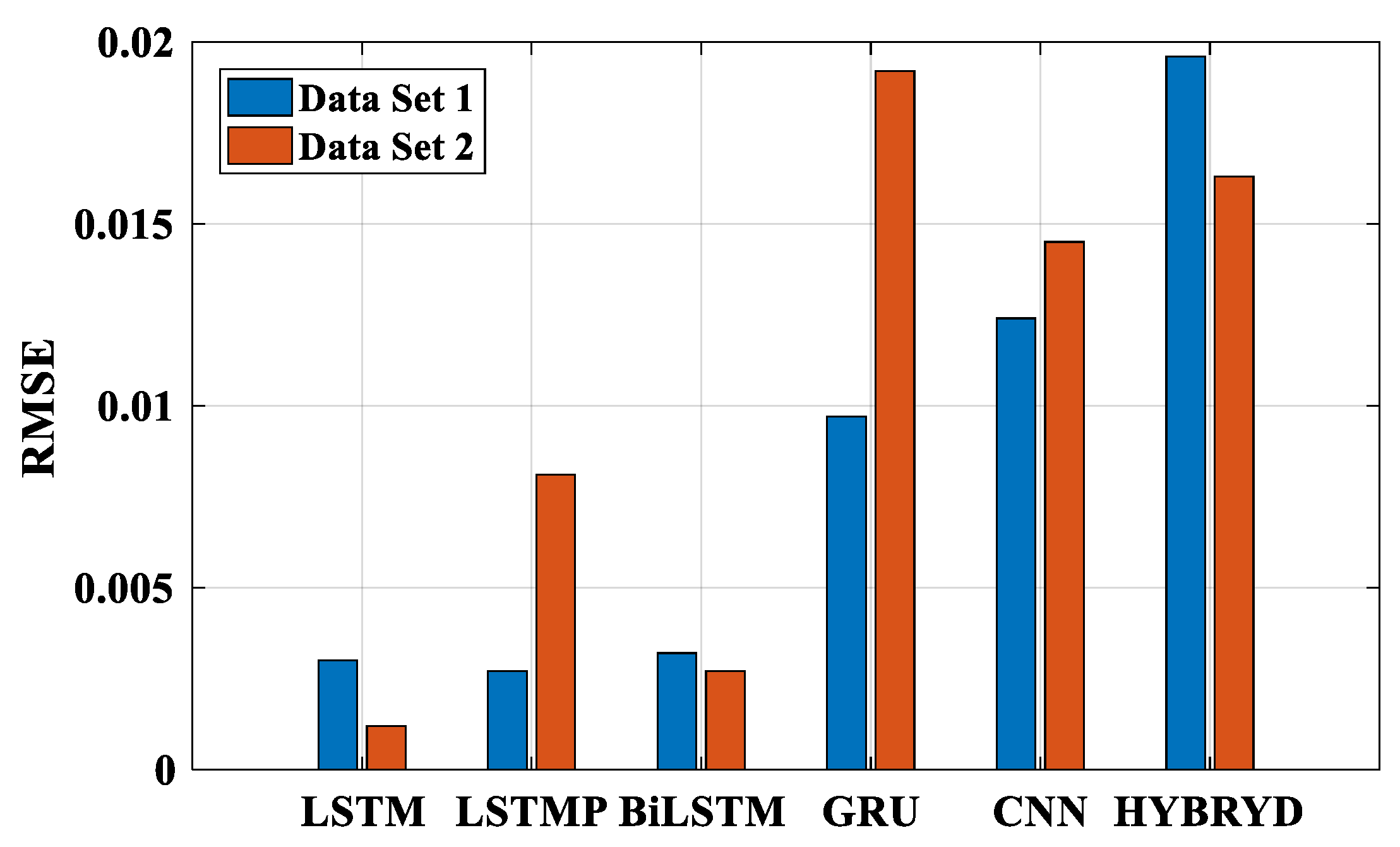
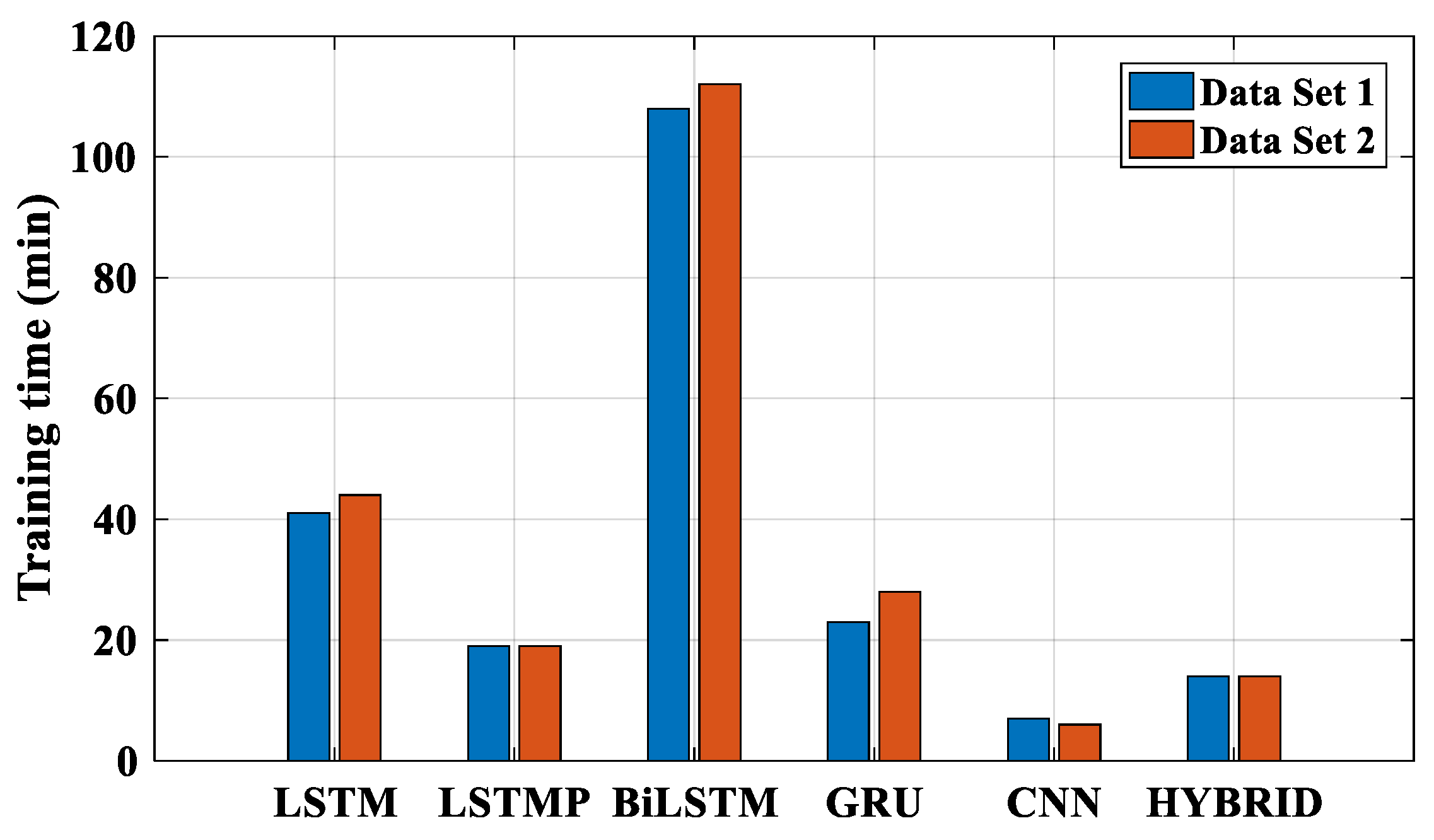
| Method | Epoch | Hidden Units | Learning Rate | Var. 1 | Var. 2 |
|---|---|---|---|---|---|
| LSTM | 225 | 159 | 0.0084568 | ||
| LSTMP | 159 | 265 | 0.0099320 | 9 | 25 |
| BiLSTM | 177 | 254 | 0.0099758 | ||
| GRU | 156 | 247 | 0.0099982 | ||
| CNN | 197 | 0.0001134 | 31 | 27 | |
| Hybrid | 150 | 96 | 0.0012401 | 9 | 17 |
| Method | RMSE | MAE | MAPE | Cor. Coef. |
|---|---|---|---|---|
| LSTM | 0.0030 | 2.5577 | 0.5551 | 0.9962 |
| LSTMP | 0.0027 | 2.5682 | 0.5542 | 0.9960 |
| BiLSTM | 0.0032 | 2.6216 | 0.5206 | 0.9998 |
| GRU | 0.0097 | 2.6405 | 0.5601 | 0.9961 |
| CNN | 0.0124 | 2.0914 | 0.5456 | 0.9994 |
| Hybrid | 0.0196 | 2.1354 | 0.5269 | 0.9994 |
| Method | RMSE | MAE | MAPE | Cor. Coef. |
|---|---|---|---|---|
| LSTM | 0.0012 | 2.9339 | 0.5841 | 0.9951 |
| LSTMP | 0.0081 | 3.1643 | 0.5847 | 0.9943 |
| BiLSTM | 0.0027 | 2.0542 | 0.5470 | 0.9996 |
| GRU | 0.0192 | 3.1992 | 0.5852 | 0.9948 |
| CNN | 0.0145 | 1.5066 | 0.5341 | 0.9998 |
| Hybrid | 0.0163 | 1.7144 | 0.5336 | 0.9997 |
| Method | Training Time (Min) Data Set 1 | Training Time (Min) Data Set 2 |
|---|---|---|
| LSTM | 41 | 44 |
| LSTMP | 19 | 19 |
| BiLSTM | 108 | 112 |
| GRU | 23 | 28 |
| CNN | 7 | 6 |
| Hybrid | 14 | 14 |
| Method | Hyperparameters | Performance Evaluation | ||
|---|---|---|---|---|
| Epochs | NHU | RMSE | Corr. Coef. | |
| LSTM | 250 | 200 | 0.0517 | 0.9514 |
| GRU | 250 | 200 | 0.0023 | 0.9528 |
| LSTM optimized | 225 | 159 | 0.0030 | 0.9962 |
| GRU optimized | 156 | 237 | 0.0097 | 0.9961 |
Disclaimer/Publisher’s Note: The statements, opinions and data contained in all publications are solely those of the individual author(s) and contributor(s) and not of MDPI and/or the editor(s). MDPI and/or the editor(s) disclaim responsibility for any injury to people or property resulting from any ideas, methods, instructions or products referred to in the content. |
© 2023 by the authors. Licensee MDPI, Basel, Switzerland. This article is an open access article distributed under the terms and conditions of the Creative Commons Attribution (CC BY) license (https://creativecommons.org/licenses/by/4.0/).
Share and Cite
Guanoluisa, R.; Arcos-Aviles, D.; Flores-Calero, M.; Martinez, W.; Guinjoan, F. Photovoltaic Power Forecast Using Deep Learning Techniques with Hyperparameters Based on Bayesian Optimization: A Case Study in the Galapagos Islands. Sustainability 2023, 15, 12151. https://doi.org/10.3390/su151612151
Guanoluisa R, Arcos-Aviles D, Flores-Calero M, Martinez W, Guinjoan F. Photovoltaic Power Forecast Using Deep Learning Techniques with Hyperparameters Based on Bayesian Optimization: A Case Study in the Galapagos Islands. Sustainability. 2023; 15(16):12151. https://doi.org/10.3390/su151612151
Chicago/Turabian StyleGuanoluisa, Richard, Diego Arcos-Aviles, Marco Flores-Calero, Wilmar Martinez, and Francesc Guinjoan. 2023. "Photovoltaic Power Forecast Using Deep Learning Techniques with Hyperparameters Based on Bayesian Optimization: A Case Study in the Galapagos Islands" Sustainability 15, no. 16: 12151. https://doi.org/10.3390/su151612151
APA StyleGuanoluisa, R., Arcos-Aviles, D., Flores-Calero, M., Martinez, W., & Guinjoan, F. (2023). Photovoltaic Power Forecast Using Deep Learning Techniques with Hyperparameters Based on Bayesian Optimization: A Case Study in the Galapagos Islands. Sustainability, 15(16), 12151. https://doi.org/10.3390/su151612151









